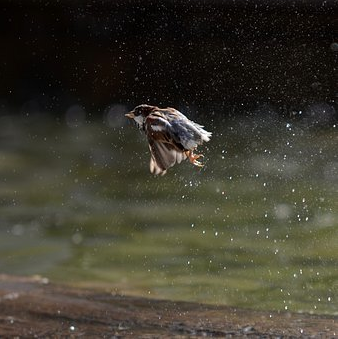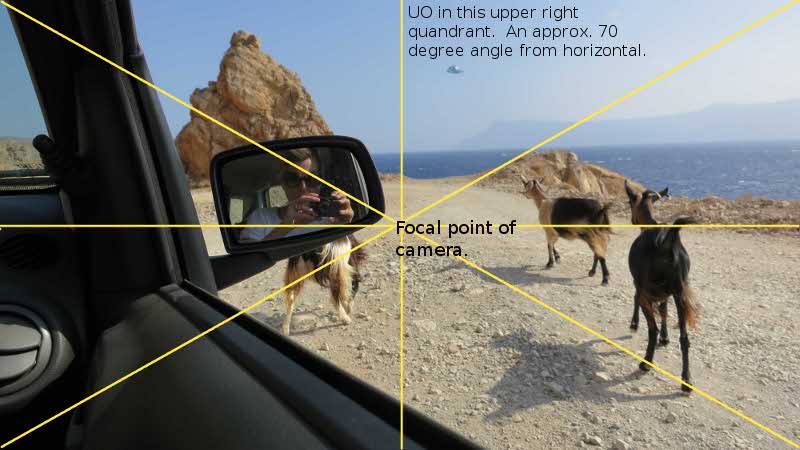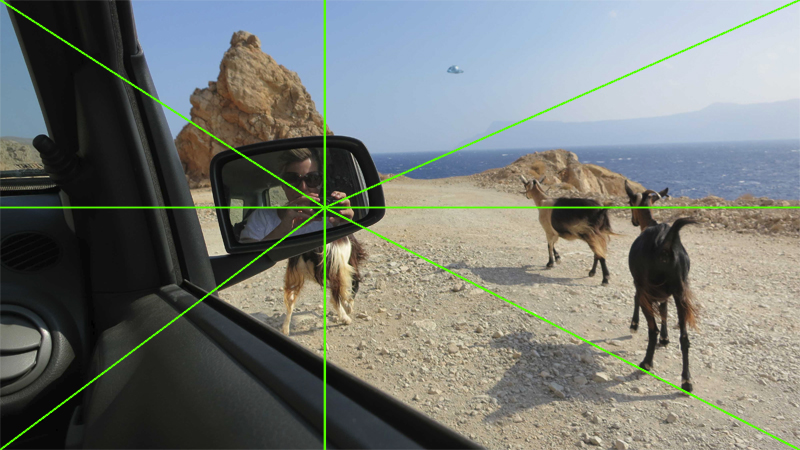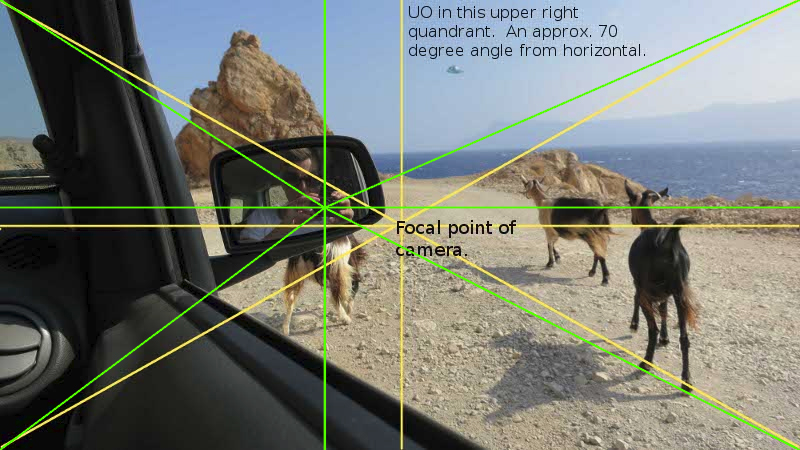It looks like you're using an Ad Blocker.
Please white-list or disable AboveTopSecret.com in your ad-blocking tool.
Thank you.
Some features of ATS will be disabled while you continue to use an ad-blocker.
share:
Originally posted by JohnnyAnonymous
Since I'm still really hesitant on the bird theory, perhaps you folks can help enlighten me a tad.
Could someone (anyone), link up a photograph (has to be a linkable source) of a darkish or blue bird with an extreme luminous reflection off of it? The photo can not be manipulated or filtered (thank you).
I imagine that the amount of luminosity would be dependent on the amount and angle of sunlight, but here's one.
When I was in Alaska in August, we were out looking at birds and seals and stuff and one of the things I noticed was that, when wet, most of the birds and seals looked darker and reflected light.

Link
I am convinced it is a reflection anomaly. I can't explain the mechanics yet, but I'm working on it. The answer lies within the dynamics of the
reflective sunglasses, the sideview mirror, and the camera only 23 inches away from those surfaces. I'm in the camp that says the anomaly is in
close proximity to the camera, not miles away.
I suck at graphics. I have basic skills, and can read tutorials, and fudge around, but I don't have that knack that other ATS members have in the PS/Gimp department. I'm good with that, knowing my skills are elsewhere and members will help out.
Here's the rough out for my theory to solve this mystery. It's what we do on ATS. We'll attack this photo from every angle UNTIL we get a solution. That much is agreed.
I've bisected the UO photo very crudely, (maybe someone can make a nicer one?) just to denote the center of the camera's focal point. To know the exact center of the picture is critical, no matter what camp you are residing in.

Can everyone agree on this?
The camera was pointing at THAT spot when the picture was taken. Focus on particular surrounding objects has already been established.
The balloons and birds theory rely upon the fact that they drifted in and out of the scene, updrafts, downdrafts, of which the Shooter never saw any of, so those theories are speculation derived upon opinion. Balloons and birds also go against the professional analysis that Jeff gave us in the OP, with the key points being "no movement blur" and "symmetry". Jeff ruled out those in his analysis, and so did I. The reflection theory I am presenting coincides perfectly with Jeff's analysis, but satisfies his statement of inconclusive.
After presenting my crude bisection image, I'd like to do one focused on the camera's lens, and will pause while another member volunteers, one who has better skills than I. The bisection of the camera's lens from the image in the sideview mirror yields the same angle, in mirror image (reversed). I also suspect the anomaly in it's present form is actually 180 degrees (inverted) from it's origins on the sunglass lens.
Just my theory.
The grid will be good to plot courses and speeds for the balloons and birds. The grid will also be useful to depict reflective angles.
Have at it.
I suck at graphics. I have basic skills, and can read tutorials, and fudge around, but I don't have that knack that other ATS members have in the PS/Gimp department. I'm good with that, knowing my skills are elsewhere and members will help out.
Here's the rough out for my theory to solve this mystery. It's what we do on ATS. We'll attack this photo from every angle UNTIL we get a solution. That much is agreed.
I've bisected the UO photo very crudely, (maybe someone can make a nicer one?) just to denote the center of the camera's focal point. To know the exact center of the picture is critical, no matter what camp you are residing in.

Can everyone agree on this?
The camera was pointing at THAT spot when the picture was taken. Focus on particular surrounding objects has already been established.
The balloons and birds theory rely upon the fact that they drifted in and out of the scene, updrafts, downdrafts, of which the Shooter never saw any of, so those theories are speculation derived upon opinion. Balloons and birds also go against the professional analysis that Jeff gave us in the OP, with the key points being "no movement blur" and "symmetry". Jeff ruled out those in his analysis, and so did I. The reflection theory I am presenting coincides perfectly with Jeff's analysis, but satisfies his statement of inconclusive.
After presenting my crude bisection image, I'd like to do one focused on the camera's lens, and will pause while another member volunteers, one who has better skills than I. The bisection of the camera's lens from the image in the sideview mirror yields the same angle, in mirror image (reversed). I also suspect the anomaly in it's present form is actually 180 degrees (inverted) from it's origins on the sunglass lens.
Just my theory.
The grid will be good to plot courses and speeds for the balloons and birds. The grid will also be useful to depict reflective angles.
Have at it.
reply to post by Druid42
I can help you with graphics if you'd like.
Can you U2U me some simple instructions what it is you'd like?
I'm not sure what you're trying to show with the focal point up there.
I can help you with graphics if you'd like.
Can you U2U me some simple instructions what it is you'd like?
I'm not sure what you're trying to show with the focal point up there.
reply to post by Druid42
Druid, my friend, I just don't see what that anomaly could be reflecting on. The window is down, the photographer is behind the camera, so no matter what it is -- ring, sunglasses, door lock -- I don't see what it would be reflecting onto, in order for it to appear in that spot.
Druid, my friend, I just don't see what that anomaly could be reflecting on. The window is down, the photographer is behind the camera, so no matter what it is -- ring, sunglasses, door lock -- I don't see what it would be reflecting onto, in order for it to appear in that spot.
reply to post by adjensen
The focal length is under 23 inches/60 cms. The object photographed is 23 inches from the lens of the camera. The anomaly is an artifact from the reflection from the sunglasses, which is 23 inches away.
Reversed, and inverted, the anomaly represents an inverted picture of the rim of the sun glasses, plus the dark dots of the goats along the car.
The simplest explanation.
The focal length is under 23 inches/60 cms. The object photographed is 23 inches from the lens of the camera. The anomaly is an artifact from the reflection from the sunglasses, which is 23 inches away.
Reversed, and inverted, the anomaly represents an inverted picture of the rim of the sun glasses, plus the dark dots of the goats along the car.
The simplest explanation.
reply to post by Druid42
But the sunglasses are behind the camera, right? So how does a reflection of them appear in front of the camera? There needs to be something ahead of the camera that the sunglasses would be reflecting off of, and there's nothing there.
But the sunglasses are behind the camera, right? So how does a reflection of them appear in front of the camera? There needs to be something ahead of the camera that the sunglasses would be reflecting off of, and there's nothing there.
reply to post by freelance_zenarchist
No reason to u2u, just make a grid like I did with the camera as the focal point. Base it on the center of the camera lens. I've already matched the angle.
Then, overlay the two.
You'll see the focal length is 23 inches. Post the results for us.
It shows the UO is a result of the edge of the sunglasses.
Waiting.
No reason to u2u, just make a grid like I did with the camera as the focal point. Base it on the center of the camera lens. I've already matched the angle.
Then, overlay the two.
You'll see the focal length is 23 inches. Post the results for us.
It shows the UO is a result of the edge of the sunglasses.
Waiting.
reply to post by adjensen
The sunglasses ARE behind the camera. However, they reflect, in the mirror.
Wear sunglasses, look in a mirror, then photograph yourself. You'll see infinite regression, at the right angle.
The sunglasses ARE behind the camera. However, they reflect, in the mirror.
Wear sunglasses, look in a mirror, then photograph yourself. You'll see infinite regression, at the right angle.
Originally posted by adjensen
reply to post by Druid42
Druid, my friend, I just don't see what that anomaly could be reflecting on. The window is down, the photographer is behind the camera, so no matter what it is -- ring, sunglasses, door lock -- I don't see what it would be reflecting onto, in order for it to appear in that spot.
The anomaly isn't reflecting. It's a reflection that creates it. It's a reflection off the sunglasses.
The dark dots on the front of the image (cockpit, from some camps), are actually the two goats with black fur trotting along the car. They show up dark in the reduced reflection, in the original.
If a talented individual takes the anomaly, inverts it, and reverses it, then matches it to a zoom of the Shooter's eyeglasses, you'll be able to see the goats appear.
reply to post by freelance_zenarchist
Exactly! Words can't explain my gratitude.
Thank you!
(Oh wait, further inspection denotes curved lines. The lines should be direct before intersecting. The point is, which should be stressed, is that the anomaly can be mapped to an inclusion. Direct correlation proves not only a position, but also the means for identification.)
Exactly! Words can't explain my gratitude.
Thank you!
(Oh wait, further inspection denotes curved lines. The lines should be direct before intersecting. The point is, which should be stressed, is that the anomaly can be mapped to an inclusion. Direct correlation proves not only a position, but also the means for identification.)
edit on
10/3/12 by Druid42 because: spelling err
Originally posted by Druid42
reply to post by adjensen
The sunglasses ARE behind the camera. However, they reflect, in the mirror.
Wear sunglasses, look in a mirror, then photograph yourself. You'll see infinite regression, at the right angle.
Well, I'm still not seeing that concept, but I can tell you that there is no geometrical relationship between the position of the sunglasses and the position of the anomaly in the picture (assuming that it is not modified/cropped in any way.)
For anyone interested, I haven't seen the actual location posted where the UO photo was taken. Looks to be about a mile north of Balos Beach
Hotel.
www.panoramio.com...
www.panoramio.com...
Has anyone verified if the window was rolled up or down? If it is rolled up, it clearly could be a chip in the glass from a flying rock or pebble.
The angle makes it look look like an illusion of distance.
AAC
AAC
Originally posted by AnAbsoluteCreation
Has anyone verified if the window was rolled up or down? If it is rolled up, it clearly could be a chip in the glass from a flying rock or pebble. The angle makes it look look like an illusion of distance.
AAC
It is definitely, without a doubt, rolled down.
Originally posted by aynock
reply to post by Jinglelord
also, gull's wings are pointed at the end - not squareedit on 3-10-2012 by aynock because: (no reason given)
What? when did this happen?!
While it is true gull wings are pointed they can and do spread the end feathers while doing maneuvers or turning while soaring.
I may have over accentuated the squareness in my tracing but the wings aren't really in focus and the fine details aren't easy to pick out as you may have noticed. At the angle I believe the bird is in the wings would also appear more square because they don't really come to an exact point like a spear, there are flight feathers that are square that come out at an angle to the rear an out which is more or less accentuated depending on the species of gull.
Originally posted by JohnnyAnonymous
Since I'm still really hesitant on the bird theory, perhaps you folks can help enlighten me a tad.
Could someone (anyone), link up a photograph (has to be a linkable source) of a darkish or blue bird with an extreme luminous reflection off of it? The photo can not be manipulated or filtered (thank you).
The reason why I ask is that the reflective glow on the Crete object in question is extremely bright and I can't personally recall seeing or taking a photo or video of any bird that would match such brightness?
I'd certainly appreciate it and will thank all in advance.
Johnny
In my theory the bird is gray and white (possibly black wing tips and typical black seagull features.
The color comes from Canon's internal Jpeg Processor taking a distant out of focus object and averaging the hue with the surrounding not to mention the bird could have easily had a blue hue not detectable to the eye from reflections off the sea. According to DP review this particular model can over saturate with blues.
As for the brightness it isn't really that bright unless you zoom in like we're all doing. It looks like the dang sun when you zoom in enough! In reality it is a blown highlight from the white of the bird which the processor is obviously not handling well.
This is actually a very nice camera I am going to try to find a used one and see if I can replicate this one day. I have lots of sun, water and gulls around here... The majority of my wildlife shots are film which behaves very differently so there would be no point in posting a photo.
Originally posted by Jinglelord
Originally posted by JohnnyAnonymous
Since I'm still really hesitant on the bird theory, perhaps you folks can help enlighten me a tad.
Could someone (anyone), link up a photograph (has to be a linkable source) of a darkish or blue bird with an extreme luminous reflection off of it? The photo can not be manipulated or filtered (thank you).
The reason why I ask is that the reflective glow on the Crete object in question is extremely bright and I can't personally recall seeing or taking a photo or video of any bird that would match such brightness?
I'd certainly appreciate it and will thank all in advance.
Johnny
In my theory the bird is gray and white (possibly black wing tips and typical black seagull features.
The color comes from Canon's internal Jpeg Processor taking a distant out of focus object and averaging the hue with the surrounding not to mention the bird could have easily had a blue hue not detectable to the eye from reflections off the sea. According to DP review this particular model can over saturate with blues.
You say that the Canon is changing the hue and brightness of an area because it is out of focus? That sounds like a complete nonsensical theory to me. Where did you get this "information"?
Originally posted by Jinglelord
As for the brightness it isn't really that bright unless you zoom in like we're all doing. It looks like the dang sun when you zoom in enough! In reality it is a blown highlight from the white of the bird which the processor is obviously not handling well.
Uh, you're saying it "isn't really that bright"? It seems like a bright round specular highlight to me (and I'm sure to most of the people who look at the photo). It looks bright when its not zoomed and when it is zoomed. It is of minimal saturation and close to maximum brightness in comparison to other areas of the photo and other surrounding areas on the object. It probably looks like "the dang sun" when you zoom in a little because it is a reflection of the sun. Unless the "bird" has a bright light strapped on its back or wing or whatever.
edit on 3-10-2012 by bluestreak53 because: (no reason given)
Sorry if this has been mentioned before, but I hope everyone knows that a clean EXIF file means absolutely nothing. There are a million ways to clean
that data and restore it, such as using a program like Exifer (Exifer) or even just saving
as a different file type and then re-saving back as the original format. So, in case it wasn't said before, photo manipulation is still a very real
possibility.
Also, on some pics with the "enhanced" filters (I know they do more harm than good), however, it seems there is a lot of pixelation around the outside of the craft. In my personal opinion this would indicate some put the object there and was trying to blend it in with the sky. Having sharp edges from putting something in a pic will make it look totally faked, having a blurred edge on objects helps give the illusion it is part of the picture. The blurring would cause some odd pixelation like you see around the edge of the craft, of course that is just my personal take on it. I'm a web developer, not a graphic designer haha.
Also, on some pics with the "enhanced" filters (I know they do more harm than good), however, it seems there is a lot of pixelation around the outside of the craft. In my personal opinion this would indicate some put the object there and was trying to blend it in with the sky. Having sharp edges from putting something in a pic will make it look totally faked, having a blurred edge on objects helps give the illusion it is part of the picture. The blurring would cause some odd pixelation like you see around the edge of the craft, of course that is just my personal take on it. I'm a web developer, not a graphic designer haha.
new topics
-
Bizarre Labour Party Tic Toc Video Becomes Even More Embarrassing
Regional Politics: 6 hours ago
top topics
-
The elephant in the room (wearing a hoodie)
US Political Madness: 14 hours ago, 14 flags -
Dr. Demento
Music: 14 hours ago, 6 flags -
Bizarre Labour Party Tic Toc Video Becomes Even More Embarrassing
Regional Politics: 6 hours ago, 4 flags -
Potter to WHU
World Sports: 12 hours ago, 2 flags
active topics
-
Los Angeles brush fires latest: 2 blazes threaten structures, prompt evacuations
Mainstream News • 268 • : 777Vader -
The elephant in the room (wearing a hoodie)
US Political Madness • 26 • : xuenchen -
Its Looking Like Schiff - Vindman - Ciaramella Conspired to Impeach President Trump.
Political Conspiracies • 188 • : WeMustCare -
Judge rules president-elect Donald Trump must be sentenced in 'hush money' trial
US Political Madness • 68 • : xuenchen -
Statements of Intent from Incoming Trump Administration Members - 2025 to 2029.
2024 Elections • 60 • : WeMustCare -
Trump's idea to make Canada the 51st US state: 'Potential is massive'
Mainstream News • 155 • : DaydreamerX -
Gravitic Propulsion--What IF the US and China Really Have it?
General Conspiracies • 38 • : DaydreamerX -
What Is 'Quad Demic'? Mask Mandate Returns In These US States
Diseases and Pandemics • 45 • : Scratchpost -
Encouraging News Media to be MAGA-PAF Should Be a Top Priority for Trump Admin 2025-2029.
Education and Media • 93 • : WeMustCare -
Advice for any young Adult .
General Chit Chat • 18 • : Cre8chaos79



